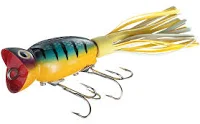Reprinted from the Sioux City Journal
Building fishing rods is a productive way to spend winter evenings. A few hours of work will result in a rod better than anything you can buy off the rack. Of course it will take you a few rods of practice to reach that level, but it is achievable.
If you are an angler who takes his fishing seriously, you should be making your own rods.
Why, you ask?
There are lots of reasons. First, there’s a great feeling of accomplishment when you catch a fish on a rod you have made yourself. It just increases the enjoyment of your sport. Second, you can design a rod that fits your fishing style. Like pitching crankbaits? A crankbait rod is a lot different than a rod made for jig fishing, or pulling spinners behind bottom bouncers or throwing spinnerbaits, or drop shotting.
But perhaps the biggest reason is simply the enjoyment of doing so. How better to fill a couple of hours most winter evenings by working on a rod you will fish with next spring. It’s productive and it is time well spent.
I’ve been making my own rods since the late 1960s. Those were the days of fiberglass. Honestly, there were few rods being made by the major companies that were any good for the sophistication that was rapidly entering the industry. Jig fishing was coming on strong, spoon plugging was making news across the north country. New crankbait designs were plentiful and the advent of plastics in fishing was just coming on.
But when it came to rods, there wasn’t much progress.
Can you believe that most fiberglass rods in those days were designed to feel good when you took them off the rack and wiggled them. That’s how rod companies thought most anglers were choosing their rods. So they made rods that wiggled well. Trouble is, fishing with a wet noodle does not result in good hook ups.
So I began to make my own rods. I’d purchase, let’s say a 7-foot, two piece blank. I’d trim some off the tip and maybe some off the butt and end up with a 6-foot 4-inch rod that would have some backbone and handle a 3/8ths ounce jig or troll a crankbait well.

Building fishing rods is a productive way to spend winter evenings. A few hours of work will result in a rod better than anything you can buy off the rack. Of course it will take you a few rods of practice to reach that level, but it is achievable.
Somewhere along the line rod companies wised up and began producing rods that had backbone and were fine fishing tools. The most advancement was made when graphite came on the scene. Graphite rods just don’t wiggle. At about $100 each in the mid-1970s, the rod had to perform well. So good design entered the picture. However, the desire to build rods never left me. Although most of my spinning and casting rods today are name brand rods, there are still a lot of my hand built rods among them.
For almost the past 20 years, my rod making has been focused on bamboo. I like the challenge and the learned skills that come with taking a bamboo pole and turning it into a fly rod that is well worth $1,000 or so. But every once in a while I buy a graphite blank and put it together because I just can’t resist it.
So, how do you get started. Well, there are a few tools you will need to purchase. A good rod winder would be a wise purchase, although I’ve wrapped a lot of rods with the thread spool sitting in a bowl on a table with the thread going through the pages of a book. Add weight to the book, such as more books, until you get the tension you like and begin winding.
But it helps to have a cradle to hold the rod while you wind the thread onto the guides. I don’t use a cradle because I have wrapped so many rods simply holding the blank in my hands it is just easier for me.
You will need an inexpensive burnisher to pack your thread and burnish it after you wrap a guide to flatten the thread. Add a razor blade to cut your thread and you are ready to wrap. Once your wraps are made you can apply color preserver to maintain the thread color or simply apply special rod wrap epoxy without the color preserver, your choice.
More outdoors information available at siouxcityjournal.com/sports/recreation/outdoors





0 Comments